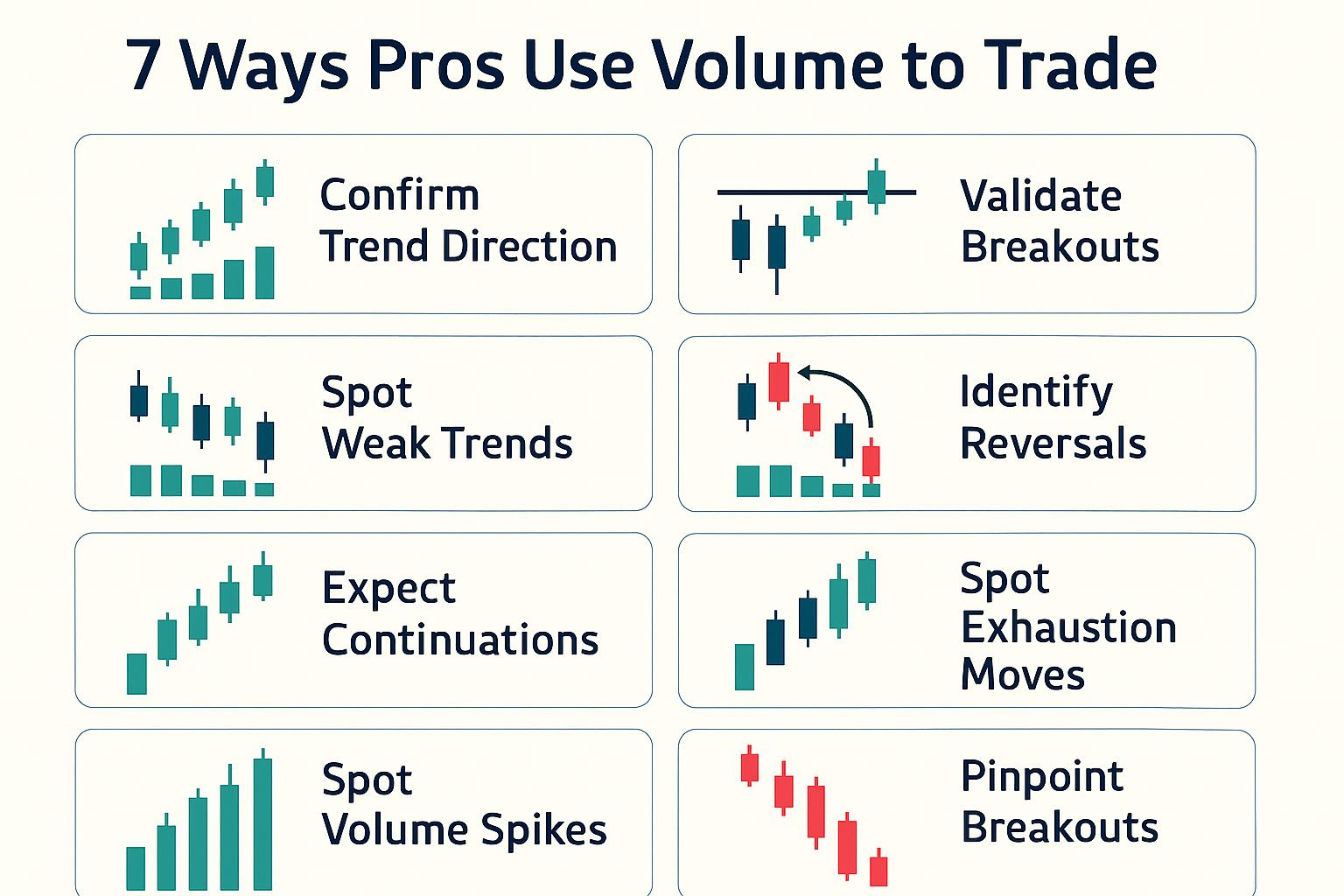Business
Professionals Leverage Volume Analysis for Trading Success

Understanding market dynamics is essential for successful trading. While many retail traders focus solely on price movements, experienced professionals recognize that volume provides vital insights into market strength and participant behavior. This analysis reveals how seasoned traders utilize volume to enhance their trading strategies.
Confirming Price Movements Through Volume
Professional traders emphasize the importance of volume confirmation when assessing breakouts. A price surge through crucial levels, such as support or resistance, requires corresponding volume to validate the move. For instance, a breakout occurring on below-average volume suggests weak market participation, raising the likelihood of a reversal. Conversely, a breakout accompanied by a significant volume spike indicates robust participation, greatly increasing the chances of a sustained trend.
Identifying Market Patterns and Strategic Levels
Volume patterns can unveil hidden institutional activities. Large institutions strategically execute trades to minimize market impact, resulting in identifiable volume signatures. During accumulation phases, institutions gradually build positions, leading to steady price movements accompanied by increasing volume. In contrast, distribution phases reveal institutions offloading positions, often marked by declining prices and heightened volume. Recognizing these patterns allows traders to align their strategies with institutional money flows.
Volume Profile analysis is another tool professionals utilize to pinpoint significant price levels where trading activity has been concentrated. Notably, the Point of Control (POC) represents the price level with the highest traded volume, serving as a critical reference point for traders. These high-volume nodes often act as key support and resistance levels, guiding traders in making informed decisions regarding entry and exit points.
Volume divergence analysis further aids traders in detecting potential trend reversals. When price trends upward while volume declines, it signals weakening momentum. For instance, if the price reaches new highs but volume decreases, it suggests fewer participants are backing the rally, raising concerns about sustainability. Combining this analysis with momentum indicators like the Relative Strength Index (RSI) or Moving Average Convergence Divergence (MACD) enhances the reliability of these signals.
Monitoring volume during breakout retracements is also crucial. Traders assess volume behavior during pullbacks to determine the health of the prevailing trend. Low volume during retracements indicates minimal selling pressure, supporting the continuation of the trend. An increase in volume on the rebound from the breakout level confirms renewed buying interest, validating the previous breakout.
Advanced traders often employ order flow tools to analyze real-time buying and selling pressures. Volume delta, which measures the difference between uptick and downtick volumes, reveals the dynamics driving recent price movements. A positive volume delta indicates aggressive buying, suggesting bullish sentiment, while a negative delta reflects sellers accepting lower prices, pointing to bearish pressure. This granular analysis provides immediate insight into market participant behavior.
Understanding volume within the context of broader market cycles enhances traders’ ability to time their entries and manage risk effectively. During accumulation phases, volume tends to remain subdued before ramping up as the market transitions into trending phases. Significant volume spikes, such as capitulation selling at market bottoms or euphoric buying at tops, often signal pivotal cycle changes.
Successful implementation of volume analysis requires integrating it into a comprehensive trading strategy. Traders should develop a systematic approach to evaluating volume in conjunction with price action and market structure. Identifying relevant volume patterns for one’s trading style and practicing their recognition in real market conditions is essential.
In summary, mastering volume analysis equips traders with valuable insights into market dynamics that price action alone cannot reveal. By understanding how to interpret volume trends effectively, traders can gain a significant edge, positioning themselves strategically in an ever-evolving market landscape.
-

 Politics4 weeks ago
Politics4 weeks agoSecwepemc First Nation Seeks Aboriginal Title Over Kamloops Area
-

 World5 months ago
World5 months agoScientists Unearth Ancient Antarctic Ice to Unlock Climate Secrets
-

 Entertainment5 months ago
Entertainment5 months agoTrump and McCormick to Announce $70 Billion Energy Investments
-

 Science5 months ago
Science5 months agoFour Astronauts Return to Earth After International Space Station Mission
-

 Lifestyle5 months ago
Lifestyle5 months agoTransLink Launches Food Truck Program to Boost Revenue in Vancouver
-

 Technology3 months ago
Technology3 months agoApple Notes Enhances Functionality with Markdown Support in macOS 26
-

 Lifestyle3 months ago
Lifestyle3 months agoManitoba’s Burger Champion Shines Again Amid Dining Innovations
-

 Top Stories2 months ago
Top Stories2 months agoUrgent Update: Fatal Crash on Highway 99 Claims Life of Pitt Meadows Man
-

 Politics4 months ago
Politics4 months agoUkrainian Tennis Star Elina Svitolina Faces Death Threats Online
-

 Sports5 months ago
Sports5 months agoSearch Underway for Missing Hunter Amid Hokkaido Bear Emergency
-

 Politics5 months ago
Politics5 months agoCarney Engages First Nations Leaders at Development Law Summit
-

 Technology5 months ago
Technology5 months agoFrosthaven Launches Early Access on July 31, 2025














